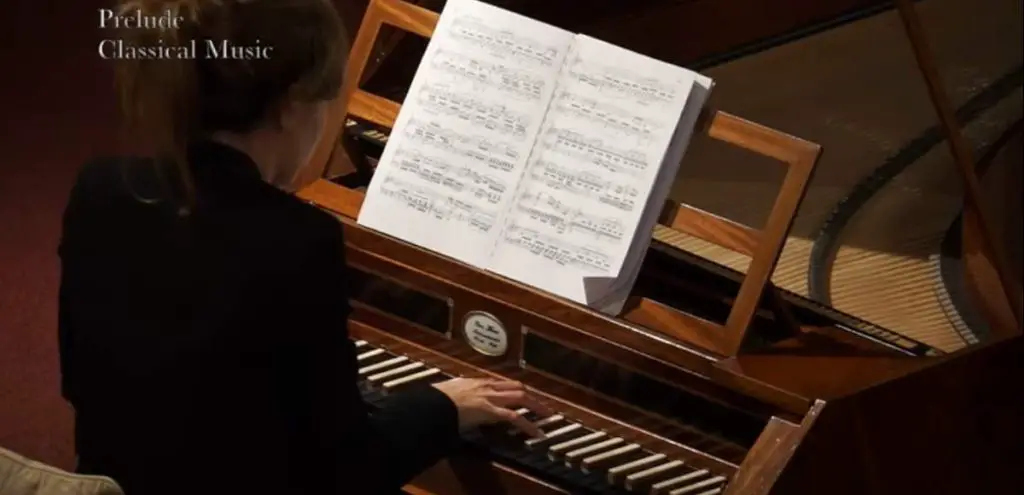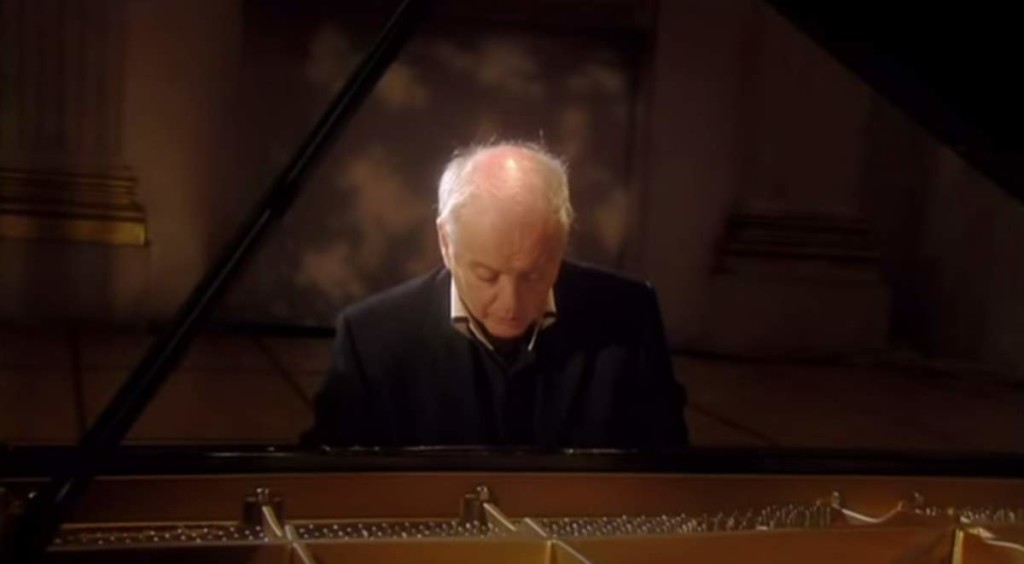Polish classical pianist Krystian Zimerman plays Ludwig van Beethoven’s Piano Sonata No. 8 in C minor, Op. 13, commonly known as Sonata Pathétique. Year of the recording: 2006.
Beethoven’s Piano Sonata No. 8 “Pathetique”
Ludwig van Beethoven’s Piano Sonata No. 8 in C minor, Op. 13, commonly known as “Pathétique,” is one of his most celebrated compositions. Created in 1798 when Beethoven was 27 years old (published a year later in 1799), this piece showcases a remarkable blend of classical structure with the burgeoning emotionality of the Romantic era, a movement that Beethoven is often credited with helping to initiate.
The sonata is distinguished by its expressive depth and structural innovations. It reflects a significant departure from the more light-hearted style of his earlier works. This change is partly attributed to Beethoven’s growing realization of his encroaching deafness, a personal crisis that deeply influenced his artistic direction.
One of the most striking features of the “Pathétique” Sonata is its emotional range. It encompasses deep melancholy, fiery drama, and tender expressiveness. This emotional depth is achieved through Beethoven’s masterful use of harmonic language, dynamic contrasts, and innovative pianistic techniques. He employs a wide range of piano dynamics, from forceful fortissimos to delicate pianissimos, often within the same phrase, adding to the dramatic effect.
Beethoven also experiments with form and structure in this sonata. While adhering to the classical sonata form in a broad sense, he introduces modifications that allow for greater emotional expression. The sonata is known for its bold harmonic progressions and dramatic rhythmic motifs, which were quite innovative for the time.
The “Pathétique” Sonata was well-received by Beethoven’s contemporaries and has continued to be a staple in the repertoire of concert pianists. Its popularity is not just due to its emotional depth but also because of its technical challenges, which allow performers to showcase their skill and interpretative abilities.
In terms of its historical and musical significance, the “Pathétique” Sonata represents a critical juncture in Beethoven’s development as a composer. It marks the transition from the classical traditions of Mozart and Haydn, which Beethoven inherited, to a more personal and expressive style. This sonata is often seen as a precursor to the Romantic era in music, influencing subsequent generations of composers.
The “Pathétique” Sonata’s enduring appeal lies in its combination of classical form with a new depth of emotional expression. It remains a profound testament to Beethoven’s genius and his ability to convey deep human emotions through music.
Movements
There are three movements:
1. Grave (Slowly, with solemnity) – Allegro di molto e con brio (Very quickly, with vigor)
The first movement of Beethoven’s Piano Sonata No. 8 in C minor, Op. 13, “Pathétique,” is a compelling and dramatic piece that sets the tone for the entire sonata. This movement is marked “Grave – Allegro di molto e con brio” and is notable for its stark contrasts in mood and dynamics, as well as its innovative structure.
The movement opens with a slow introduction marked “Grave.” This section is characterized by its solemn and dramatic nature, featuring heavy chords and a sense of foreboding. This introduction serves as a powerful curtain-raiser, setting a somber and intense mood. It includes a series of fortissimo chords, followed by more lyrical, mournful phrases. This interplay between the powerful chords and the more melodic lines is a hallmark of Beethoven’s ability to convey deep emotion through music.
Following the Grave, the movement swiftly transitions into the “Allegro di molto e con brio” section. This part is in sonata form, which was typical of the first movements of classical sonatas. However, Beethoven’s approach to sonata form in this movement is innovative and dramatic. The Allegro section is energetic and turbulent, marked by rapid passages and a vigorous rhythm. It contrasts sharply with the somber mood of the introduction.
The key feature of this Allegro section is its dramatic use of dynamics and rhythmic intensity. Beethoven employs sudden shifts in volume and pace, which adds to the emotional impact of the piece. The exposition presents two contrasting themes: the first is forceful and assertive, while the second is more lyrical and flowing. These themes are developed throughout the movement in a manner that showcases Beethoven’s mastery of tension and release.
The development section of the movement is where Beethoven truly experiments, taking the themes through various harmonic and rhythmic transformations. This section is characterized by a sense of conflict and exploration, as Beethoven modulates through different keys and introduces new rhythmic motifs.
Finally, the recapitulation brings back the themes from the exposition, but with alterations that reflect the journey through the development section. The movement concludes with a coda that revisits the Grave theme from the introduction, bringing the movement full circle with a dramatic and emphatic finish.
Overall, the first movement of the “Pathétique” Sonata is a masterpiece of emotional depth and structural innovation. It is a testament to Beethoven’s ability to push the boundaries of classical form to express profound human emotions. The movement’s dramatic contrasts, along with its exploration of tension and release, make it a powerful and enduring piece in the classical piano repertoire.
2. Adagio cantabile (Slowly, in a singing style)
The second movement of Pathétique Sonata s a stark contrast to the turbulent first movement. Marked “Adagio cantabile,” this movement is celebrated for its lyrical beauty and serene, expressive quality.
The movement is in rondo form, a common structure for slow movements in classical sonatas. It features a main theme that is both simple and profoundly expressive, returning several times with varied accompaniments and harmonizations. This theme, known for its singing quality, exemplifies Beethoven’s ability to create melodies of great tenderness and emotional depth.
The opening theme is characterized by its calm and melodic line, which flows gently over a steady accompaniment. This theme has an almost vocal quality as if it were a song without words. It’s this song-like character that gives the movement its “cantabile” (singing) designation. The melody is memorable for its simplicity and emotional directness, conveying a sense of peaceful contemplation.
As the movement progresses, the main theme is interspersed with contrasting sections. These sections introduce new material and provide a contrast in texture and mood, but they never stray far from the movement’s overall character of lyrical serenity. Beethoven’s use of modulation in these sections is subtle yet effective, adding color and depth to the movement without disturbing its tranquil character.
The accompaniment in this movement is worth noting as well. Beethoven employs a variety of accompaniment patterns to support the melody, including arpeggios and gently flowing figures. These accompaniment patterns enhance the melodic line and contribute to the overall atmosphere of calm and introspection.
The second movement of the “Pathétique” Sonata stands out for its emotional warmth and lyricism. It provides a reflective and deeply moving interlude between the dramatic outer movements of the sonata. This movement is often cited as one of Beethoven’s most beautiful slow movements and is a favorite among both pianists and listeners for its graceful melody and expressive depth.
In the context of the sonata as a whole, this movement serves as an emotional respite. It offers a moment of calm and introspection before the drama of the final movement. The “Adagio cantabile” remains one of the finest examples of Beethoven’s lyrical style and his ability to express profound emotions through simple, yet deeply moving musical ideas.
3. Rondo: Allegro (Quickly)
The third movement of Beethoven’s Piano Sonata No. 8 in C minor, Op. 13, known as “Pathétique,” is a dynamic and spirited conclusion to the sonata. Marked “Rondo: Allegro,” this movement returns to the dramatic and turbulent mood of the first movement, providing a vigorous and energetic finale.
Structured as a rondo, this movement is characterized by the recurring main theme, which is lively and rhythmic. The rondo form, typical for final movements in classical sonatas, involves the repetition of this main theme interspersed with contrasting episodes. Beethoven’s rondo theme here is memorable for its rhythmic drive and forward momentum.
The main theme of the rondo is assertive and full of energy, with a rhythmic motif that propels the movement forward. This theme is presented in a straightforward manner at the beginning and returns several times throughout the movement, each time creating a sense of familiarity and structure.
Between the recurrences of the rondo theme, Beethoven introduces contrasting episodes that provide variety and complexity. These episodes explore different moods and keys, but they always maintain the movement’s overall energetic and urgent character. Beethoven’s mastery in modulation and thematic development is evident in these sections, as he weaves together the contrasting elements into a cohesive whole.
One of the notable aspects of this movement is its virtuosic demands on the pianist. The rapid passages, sudden dynamic changes, and intricate fingerwork all contribute to the movement’s vibrant and exhilarating character. The piano writing showcases Beethoven’s innovative approach to the instrument, pushing the boundaries of what was technically possible at the time.
The movement builds in intensity towards the end, culminating in a dramatic and satisfying conclusion. The final return of the rondo theme is often more elaborate and intensified, leading to a powerful and decisive ending that brings the entire sonata to a triumphant close. It is a brilliant display of Beethoven’s compositional skill and his ability to infuse classical forms with new energy and emotional depth. The movement’s combination of rhythmic vitality, thematic development, and pianistic brilliance makes it a fitting conclusion to one of Beethoven’s most celebrated sonatas.
The “Rondo: Allegro” is not just a showcase of technical prowess, but also a testament to Beethoven’s ability to create music that is emotionally engaging and structurally innovative. It leaves the listener with a sense of completion and exhilaration, effectively concluding the emotional journey that the sonata takes one on.
Sources
- Piano Sonata No. 8 (Beethoven) on Wikipedia


